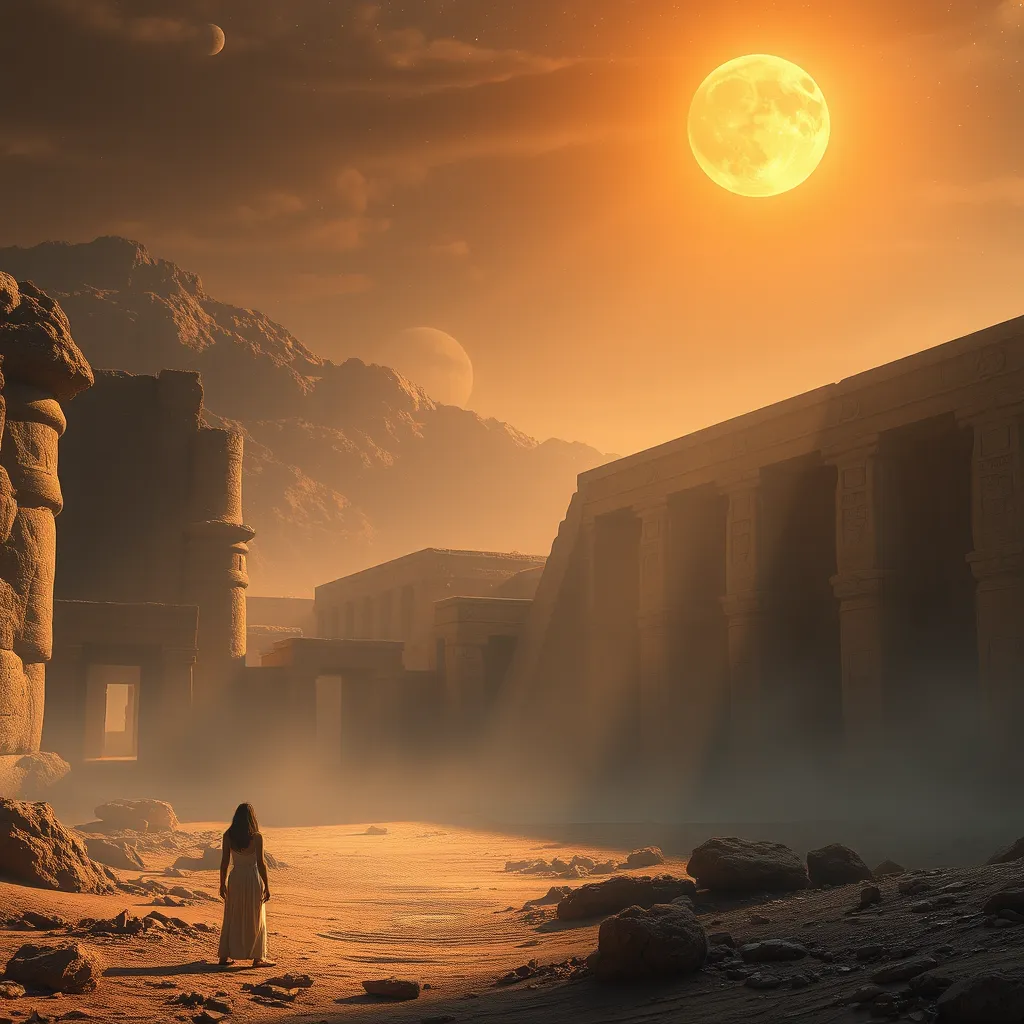The Duat: A Journey Through the Shadows of Time
I. Introduction to the Duat
The Duat, often referred to as the realm of the dead, holds a significant place in ancient Egyptian mythology. It is a complex and multifaceted concept encompassing the afterlife, where souls journey after death. The Duat serves as a bridge between the mortal world and the eternal, embodying the beliefs and values of ancient Egyptian culture.
This article aims to explore the cultural and spiritual dimensions of the Duat, unraveling its significance in ancient Egyptian beliefs and its reflection in modern interpretations. Through this journey, we will delve into the myths, rituals, and legacies that define the Duat.
II. The Origin of the Duat in Egyptian Beliefs
To understand the Duat, we must first consider the historical context of ancient Egyptian religion. The Egyptians viewed life and death as interconnected, with the afterlife being a continuation of one’s existence. This belief system laid the groundwork for the conception of the Duat.
Early texts and depictions of the Duat can be traced back to the Pyramid Texts, dating from the Old Kingdom period (circa 2686–2181 BCE). These texts provide insights into the nature of the Duat and the journey of the soul. The Duat is intricately linked with the mythology of creation, where it is often depicted as a place where the sun sets and rises anew, symbolizing rebirth and regeneration.
III. Geography and Structure of the Duat
The Duat is described in various ways, often depicted as a vast, dark landscape filled with rivers, marshes, and deserts. Its geography is symbolic of the trials and tribulations the soul must face on its journey. Key locations within the Duat include:
- The Field of Reeds: A paradise where the souls of the righteous reside, resembling the fertile Nile Valley.
- The Hall of Judgment: The place where the soul undergoes the Weighing of the Heart, overseen by Osiris and Anubis.
The geography of the Duat is rich with symbolism, representing the dualities of life and death, chaos and order, and the continuous cycle of rebirth.
IV. Deities and Spirits of the Duat
Numerous deities and spirits inhabit the Duat, playing crucial roles in the journey of the soul. Major deities associated with the Duat include:
- Osiris: The god of the afterlife and resurrection, who judges the souls of the deceased.
- Anubis: The god of mummification and the protector of graves, who guides souls through the Duat.
Protective spirits and guides also inhabit this realm, assisting souls in navigating the challenges they face. The presence of these figures emphasizes the importance of divine guidance in the journey of the soul, highlighting the interconnectedness of the mortal and divine realms.
V. The Journey Through the Duat
The journey through the Duat begins with the process of dying, which the ancient Egyptians viewed as a transition rather than an end. Upon death, the soul embarks on a perilous journey through the Duat, facing various trials that test its worthiness.
Among these trials is the Weighing of the Heart, a pivotal event where the heart of the deceased is weighed against the feather of Ma’at, the goddess of truth and justice. The implications of this ritual are profound:
- If the heart is lighter than the feather, the soul is deemed worthy and granted passage to the Field of Reeds.
- If heavier, the soul faces annihilation, devoured by Ammit, a fearsome creature that embodies the consequences of a life lived in sin.
This concept illustrates the ancient Egyptians’ belief in moral accountability and the importance of living a virtuous life.
VI. Rituals and Funerary Practices Related to the Duat
Ancient Egyptian burial customs were deeply intertwined with the beliefs surrounding the Duat. The preparation for the afterlife began long before death, with elaborate funerary practices designed to ensure safe passage through the Duat. Key elements of these practices include:
- Embalming and Mummification: Preserving the body for the afterlife, allowing the soul to recognize and return to its physical form.
- The Book of the Dead: A collection of spells and texts that guided the deceased through the Duat, providing instructions and protection against malevolent forces.
- Offerings and Prayers: Rituals performed by the living to honor the dead, ensuring their well-being and safe passage.
These practices underscore the profound connection the ancient Egyptians maintained with the Duat, reflecting their beliefs in life after death and the necessity of preparation for the journey ahead.
VII. The Legacy of the Duat in Modern Culture
The influence of the Duat extends beyond ancient Egypt, permeating contemporary literature, media, and art. Modern interpretations often draw upon the rich symbolism and themes associated with the Duat:
- Literature: The Duat has inspired countless works, exploring themes of death and the afterlife, from fantasy novels to philosophical treatises.
- Art: Artists continue to depict the Duat, capturing its mystique and the eternal struggle of the soul.
- Spiritual Discussions: The Duat remains relevant in modern spiritual and philosophical conversations, as people seek to understand the nature of existence and what lies beyond death.
These modern echoes of the Duat reflect humanity’s enduring fascination with the afterlife and the mysteries that surround it.
VIII. Conclusion: The Duat as a Reflection of Human Experience
The Duat encapsulates themes of death, rebirth, and the eternal journey, resonating with the universal human quest for understanding the afterlife. It serves as a powerful reminder of the complexities of existence, the moral implications of our actions, and the hope for continuity beyond death.
As we explore the Duat, we uncover not only the ancient Egyptians’ beliefs but also the shared human experience of grappling with mortality and the unknown. The allure of the Duat endures, inviting us to reflect on our own journeys through life and death, and the mysteries that lie beyond.




